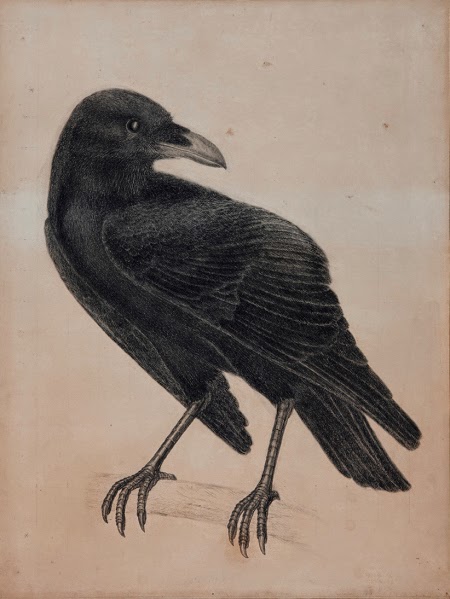As promised, information
on a newly-discovered drawing of Fanny Eaton that has emerged from the
descendants of landscape artist Walter Fryer Stocks (1842-1915). Currently so obscure as to have virtually no
reputation – reflecting the reception of his work, not necessarily its quality – Stocks was the same generation as Albert Moore and Simeon Solomon,
so could have joined their life drawing class around 1860 when Mrs Eaton sat to
the group of young artists. This well-finished
drawing in black and red chalk cannot have been done as a life-class sketch but
its presentation of the model is similar to that in Solomon’s study in the
Fitzwilliam and the accessory necklace drawn by Stocks is comparable to that
one bestowed by Moore on the Mother of Sisera in Carlisle. Indeed, it looks as if Stocks also had in
mind a Biblical or Oriental scene like Solomon’s Mother of Moses or Joanne
Boyce’s projected Sibyl.

A large number of items relating to Stocks and
his artist family were sold at Chiswick Auctions last year; his slightly more
famous brother was genre painter Arthur Stocks, whereas Walter seems to have
found landscape more congenial. The BM has a striking view of a Dartmoor rock formation named Bowerman's Nose.
-20145213575_original.jpg) A batch
of what appear to be his ‘entrance exam’ pieces for the RA Schools – pencil studies
of antique sculpture --were with Holloways in Banbury last month, together with
a couple of portraits of Walter which show that by 1880 he had a bald pate and
bushy untrimmed beard, like so many contemporaries. None
of which alas offers any insight into when where and why Fanny Eaton posed for him.
A batch
of what appear to be his ‘entrance exam’ pieces for the RA Schools – pencil studies
of antique sculpture --were with Holloways in Banbury last month, together with
a couple of portraits of Walter which show that by 1880 he had a bald pate and
bushy untrimmed beard, like so many contemporaries. None
of which alas offers any insight into when where and why Fanny Eaton posed for him.
UPDATE 2
A link to National Museum of Wales report on information supplied by Brian & Mary Eaton
It's my view that both Fanny and one of her daughters posed for the two figures on the extreme right of Millais's Jephtha's Daughter.
Then some more from Brian, who has found that the Royal Academy account books show cash payments to models variously named as Mrs Eaton (13 July 1860; 6 and 13 October 1865) , Miss Eaton (18 November 1874; 10 July 1875; 31 January 1879) and Fanny Eaton (9 February 1877). This employment was in the Painting School, not Life Drawing.














-20145213575_original.jpg)
